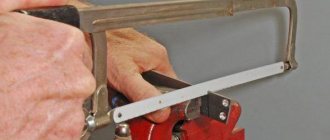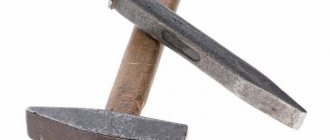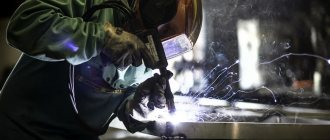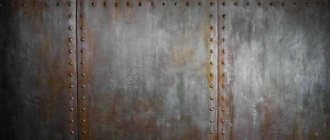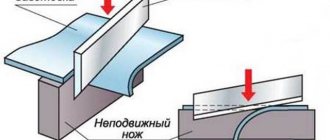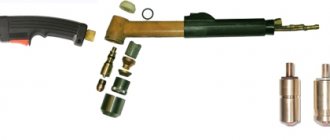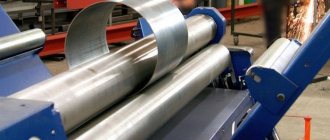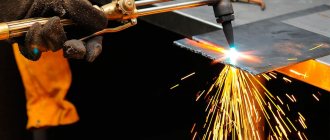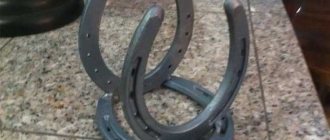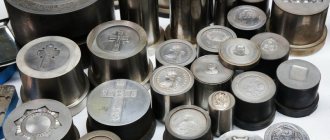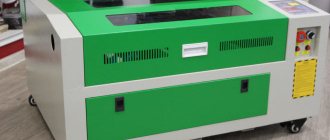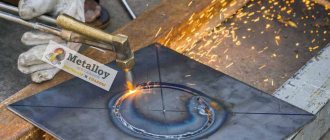The company Steel-Pro offers metal cutting services using a guillotine
This metal cutting method is based on the use of scissors and knives to chop metal. Chopping metal with a guillotine ensures a smooth cut without crumpled edges, burrs or nicks. Metal cutting is carried out using special knives and allows you to make corner, square and round profiles. In addition, cutting metal with a guillotine, in addition to high cutting accuracy, allows for transverse and longitudinal cutting of metals. The Steel-Pro company offers its customers a guillotine cutting service of any level of complexity in a modern production facility, which is equipped with the latest technology.
The Steel-Pro company invites everyone who is interested in obtaining high-quality products from sheet metal to cooperate. Modern production guarantees compliance with GOSTs and other standards, and personnel who are constantly improving their professional skills can perform complex tasks on time.
Order service
Sheet cutting
Guillotine cutting has been known for a long time, because its technologies have been developed. The name itself already reflects the cutting method, since the word “guillotine” refers to the Middle Ages and demonstrates the main principle of the machine’s operation. The capabilities of the Steel-Pro company in this segment are as follows:
- St3, St20, St09G2S – from 2.5 mm to 10 mm.
- Stainless, heat-resistant – from 2.5 mm to 4.0 mm.
- Cutting length up to 2.0 m (may vary depending on the thickness of the metal).
Prices for each type of work are different; you can find out their order, as well as discuss the terms of cooperation, with the company’s managers by office phones.
Why us
Powerful, high-performance equipment allows us to quickly process even large orders. Pipe-Price supplies a variety of rolled metal; the warehouse always has sheets of the required size and thickness; when placing and paying for an order, cutting and shipping of blanks is possible right on the day of the application.
Metal requirements
Metal cutting with a guillotine is carried out in a wide range of sheet thicknesses and sizes. Their width can be from a few centimeters to 6 meters, and their thickness from 0.5 to 10 mm. The method is applicable to ordinary steel, stainless steel, aluminum, other metals and their alloys.
No preliminary preparation of rolled metal is required; immediately after cutting, painting, galvanizing and other processing of the workpieces is possible. It is possible to work with already processed metal sheets - with the exception of the actual cut, the coating in other places is not damaged.
Advantages of guillotine cutting
This method has significant advantages that make it the most popular for cutting sheet blanks:
- Wide range of both initial sheet sizes and thicknesses, and final parts;
- Cuts smooth and profiled sheets with equal success;
- The resulting products have a perfectly straight edge, no bends, nicks, or burrs;
- No waste is generated during operation;
- High cutting speed at low price.
Product and types of guillotine
The machine, which cuts metal with a guillotine, has a fairly simple product, but this does not mean that it cannot perform complex operations. A body and a pressure beam, as well as special shears, are all that is needed for high-precision cutting of rolled metal. As an advantage, we can note the fact that cutting guarantees the production of a sheet of metal of the given dimensions without deformation.
Common types of guillotines:
- Electric.
- Hydraulic.
- Hand or foot.
Guillotine cutting of sheet metal
, ferrous metal, the process is labor-intensive, fraught with many difficulties. One of the main conditions for ensuring high-quality work is the availability of qualified personnel to work with a guillotine machine. Steel-Pro has in its arsenal not only modern equipment, but also workers who meet the required level of qualifications, which is why the guillotine cutting service is beneficial for our clients. This type of cutting is used to produce various metal plates, as well as different types of rolled metal blanks (stainless, black).
Cutting metal using guillotine shears
Guillotine shears cut sheet metal with a thickness of up to 16 mm in our warehouse in the city of Kaluga, and up to 12 mm in many other branches.
Larger sheet thickness requires more powerful equipment. Since the guillotine is 2.5 m wide, it is possible to cut sheets with the same maximum width. That is, if a client needs to produce blanks in the form of a metal strip, its length will be a maximum of 2500 mm. It is recommended to cut sheet metal with a thickness of more than 1.5 mm. The guillotine eliminates the appearance of nicks, burrs, crescent-shaped deviations, uneven bevels, and curvature of the cut. The precision of cutting steel sheets allows this cutting method to be used in many areas of production and construction. Guillotine cutting is used for the production of strip metal, gussets for metal structures, various embedded parts, etc. Sheets can be cut into squares and rectangles in this way. Often, the client needs a strip of non-standard width or a not very common size, then cutting rolled metal with guillotine knives is indispensable in this situation. Cutting metal with a guillotine reduces waste in production as a whole. There are practically no deviations from the dimensions, and cutting also tempts with the speed of reproduction of the workpieces. Another advantage of this type of cutting is that you don’t have to wait for the metal to cool before transporting and processing it, unlike thermal cutting methods.
Avoiding sheet deformation is achieved by making one cut in a straight plane and using correctly selected knives - chair scissors. For different thicknesses of rolled sheets, different types of shears are used. The pressure on the workpiece when the knives come into contact with the metal occurs equally over the entire area of the workpiece. This has a beneficial effect on the quality of the cut and on the less effort required for the cutting process. The quality of cutting is also influenced by the quality of the sheet itself, its hardness, and the presence of scale; quality and pressing force of the sheet. The guillotine mechanism has a press that reduces the pulling of rolled metal during cutting. Thanks to our experienced cutters, the smoothest cut is obtained, and fast and high-quality cutting of sheets with a guillotine .
Our office staff will help you calculate the correct required volume of sheet metal, production time, metal cutting price . Managers will tell you where this service is provided in our warehouses and how you can order chopping and cutting of metal from another branch. The cost of cutting is calculated in linear meters of chopped steel. Cutting metal on a guillotine, the price depends on the thickness of the sheet and the number of meters. Our managers will ask the buyer for a signed sheet cutting diagram.
Price for metal cutting in Moscow
| Metal thickness | From 1 to 50 rubles, rub/piece | From 50 to 100 rubles, rub/piece | Over 100 rubles, rub/piece |
| 1.0mm | 35 | 25 | 20 |
| 1.5mm | 40 | 35 | 35 |
| 2.0mm | 50 | 45 | 40 |
| 3.0mm | 60 | 55 | 50 |
| 4.0mm | 70 | 65 | 60 |
| 6.0mm | 80 | 75 | 70 |
| 8.0mm | 100 | 95 | 90 |
| 10.0mm | 120 | 115 | 110 |
| 12.0mm | 130 | 125 | 120 |
| 14.0mm | 140 | 135 | 130 |
| 16.0mm | 160 | 145 | 140 |
| 18.0mm | 180 | 165 | 160 |
| 20.0mm | 200 | 185 | 180 |
| 22.0mm | 220 | 200 | 195 |
| 25.0mm | 250 | 220 | 215 |
When is the best time to order metal cutting using a guillotine?
Guillotine metal cutting is suitable for you if you are not faced with the task of cutting complex shapes, and if you need to process workpieces up to 2,000 mm long and 12-15 mm thick inclusive. These are the maximum parameters for cutting with guillotine shears.
Operations for which it is better to use a guillotine:
- Removing excess layers of metal from workpieces and leveling their surfaces
- Removing hard crusts and scales
- Deburring of forged and cast parts
- Aligning edges
- Cutting into pieces (for sheet and long rolled metal products)
- Creating holes, lubrication channels, keyways
- Cutting end-to-end edges for welding
- Chopping or removing rivet heads
As for the purpose of the blanks, these can be elements for profiled flooring, drainage, ventilation systems, roofing and facades. In addition, this is a wide range of components for construction, automotive, and shipbuilding. We will always be happy to advise you in more detail about for which workpieces it is better to use a guillotine.
If you have a lot of workpieces and you need to get the job done quickly, then it’s better not to order a guillotine cutter. Its performance is lower than that of gas, laser and plasma equipment. If there are few preparations and you are not in a hurry, then you can not pay attention to it.
Equipment for cutting aluminum
Our company is equipped with modern high-performance machines with a guillotine mechanism and numerical software. Such equipment operates in accordance with a preset program, independently selects the optimal operating mode for a certain group of products, and performs metal cuts with pinpoint precision.
The human factor is reduced to a minimum - the operator only installs the program and monitors the operation of the machine. All operations are controlled by an intelligent system. Efficient operation is ensured and compliance with the specified parameters of the resulting products is guaranteed.
Advantages of guillotine metalworking
- Versatility - hot and cold rolled steel, stainless steel, non-ferrous metals, galvanized and painted sheets (without damaging the coating).
- Minimal loss of material - the guillotine cuts practically without shavings, sawdust and other waste.
- High quality of cutting - the knife is lowered strictly perpendicularly, so the edge is smooth, without chips, kinks, burrs and other irregularities.
- There is no heating - there are no thermal stresses along the edges of the parts, and subsequent welding improves the quality of the seams.
- Efficiency - electromechanical machines operate at a speed of 30–40 cuts per minute and can cut workpieces of considerable width with one blow.
- Favorable price - guillotine cutting is cheaper than laser, plasma and even gas cutting.
Cutting aluminum pipes (boxings)
Aluminum pipes and boxes are the most voluminous type of rolled aluminum products. The classification of such blanks is extensive. It is determined in accordance with GOSTs by shape, rolling method, wall thickness, and type of product.
To differentiate aluminum pipes by type of rolled material, the following GOST standards have been developed:
- 18475-82 and OST192096-83 for the production of cold-deformed pipes;
- 18482-79 – pressed pipes;
- 23697-79 – straight-seam welded pipe made of aluminum and alloys of this metal
The main difference between a pipe and a box is that a box is a pipe with a square or rectangular cross-section that has a lid and a base. That is, closed on both sides. Pipes and boxes are the most popular type of rolled aluminum. They are actively used in the construction of spaceships, sea and river vessels, cars, instruments, in the fields of architecture and the construction of buildings and structures for various purposes.
Cutting pipes and boxes using the guillotine method is the most effective method of cutting products. It performs precise cutting into parts of the required size with smooth edges. In this case, the metal does not heat up or deform and retains its technical characteristics.
Metal cutting with gas
Gas cutting refers to traditional thermal methods of metal processing. It can be used to produce workpieces of various shapes and standard cutting. The principle of gas cutting is to heat the metal in a stream of oxygen to a high temperature and burn it. There are two types of gas treatment:
- Cutting by hand. Thanks to portable, mobile equipment (cylinders, gas supply hoses and a cutting torch), it is possible to cut metal regardless of its location without transportation to the workshop, for example, before loading the product, directly in front of the buyer. In addition to efficiency, manual oxy-fuel cutting allows you to process any rolled metal: sheets, strips, fittings, channels, pipes, etc.
- GRM (gas cutting machine). The principle of influencing metal is similar to the manual method, with the exception of the stationary location of the equipment. Cutting is carried out with special torches that move along guides (gas is supplied through channels). The timing belt allows you to obtain a high-quality cut with a clean edge. The gas cutting machine, depending on the preliminary settings, can perform circular, straight, inclined and contour cuts.
The advantages of using gas cutting are determined by the ability to process different types of rolled steel: pipes, sections, sheets. Moreover, the thermal method allows cutting thick metal, such as plates up to 300 mm, while ensuring good edge quality.
